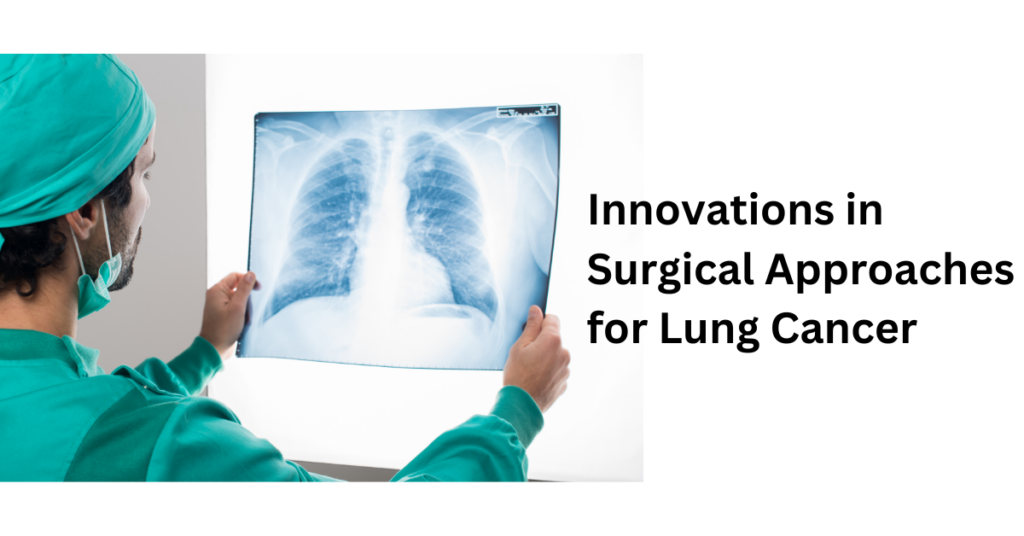Millions of individuals throughout the world are afflicted by lung cancer, a deadly condition. Fortunately, advances in medical technology have revolutionized the surgical approaches for treating lung cancer. Surgeons are now equipped with innovative techniques that not only enhance precision in tumor removal but also facilitate faster recovery for patients. In this article, we will explore some of the cutting-edge surgical approaches that have emerged in recent years, highlighting their benefits and potential impact on the management of lung cancer.
Video-Assisted Thoracoscopic Surgery (VATS)
Video-Assisted Thoracoscopic Surgery (VATS) has emerged as a minimally invasive surgical technique for the treatment of lung cancer. This approach involves the use of small incisions and a thoracoscope, a tiny camera, to visualize the lung and surrounding structures. Surgeons can then remove tumors with greater precision, minimizing trauma to healthy tissues.
The advantages of VATS include reduced postoperative pain, shorter hospital stays, decreased blood loss, and faster recovery time compared to traditional open surgeries. Additionally, VATS offers a magnified, high-definition view of the surgical site, enabling surgeons to identify and remove small tumors with greater accuracy.
Robot-Assisted Thoracic Surgery (RATS)
Robot-Assisted Thoracic Surgery (RATS) combines the advantages of minimally invasive surgery with robotic technology. This approach involves the use of a surgical robot controlled by the surgeon, who operates from a console in the operating room. The robot’s arms mimic the surgeon’s movements, allowing for precise and delicate maneuvers.
RATS offers several benefits, including enhanced dexterity, improved visualization, and reduced tremor. These advantages enable surgeons to perform complex lung cancer surgeries with greater precision and control. Furthermore, RATS allows for smaller incisions, resulting in minimal scarring, decreased postoperative pain, and quicker recovery.
Stereotactic Body Radiation Therapy (SBRT)
Stereotactic Body Radiation Therapy (SBRT) is a non-invasive treatment option for lung cancer that delivers high doses of radiation precisely to the tumor, sparing healthy surrounding tissues. Unlike traditional radiation therapy, which requires multiple sessions, SBRT delivers the radiation dose in just a few treatments.
SBRT offers several advantages for patients who are unable to undergo surgery due to medical conditions or personal preferences. It provides a targeted and effective treatment for early-stage lung cancer, achieving high local control rates. Additionally, SBRT is associated with minimal side effects, allowing patients to maintain their quality of life during and after treatment.
Lung-Sparing Surgery (Segmentectomy)
Lung-sparing surgery, also known as segmentectomy, is an alternative surgical approach to lobectomy, where only a portion of the lung affected by cancer is removed. This technique is suitable for select patients with early-stage lung cancer, preserving more lung function compared to a complete lobectomy.
Segmentectomy offers several benefits, including reduced postoperative complications, improved respiratory function, and faster recovery. By preserving healthy lung tissue, patients may experience improved quality of life and better long-term lung function.
Lung Cancer Surgical in Coimbatore have advanced significantly, enabling precision tumor removal and faster recovery for patients. Minimally invasive techniques such as VATS and RATS offer the benefits of reduced pain, shorter hospital stays, and improved visualization, while SBRT provides a non-invasive alternative for select patients. Lung-sparing surgeries like segmentectomy offer an optimal balance between tumor removal and lung function preservation. These innovative approaches contribute to improved patient outcomes, reduced morbidity, and enhanced quality of life. As technology continues to evolve, the future holds even more promise for the surgical management of lung cancer, ultimately leading to better survival rates and a brighter outlook for patients.
Read more on Sohago Blogs

